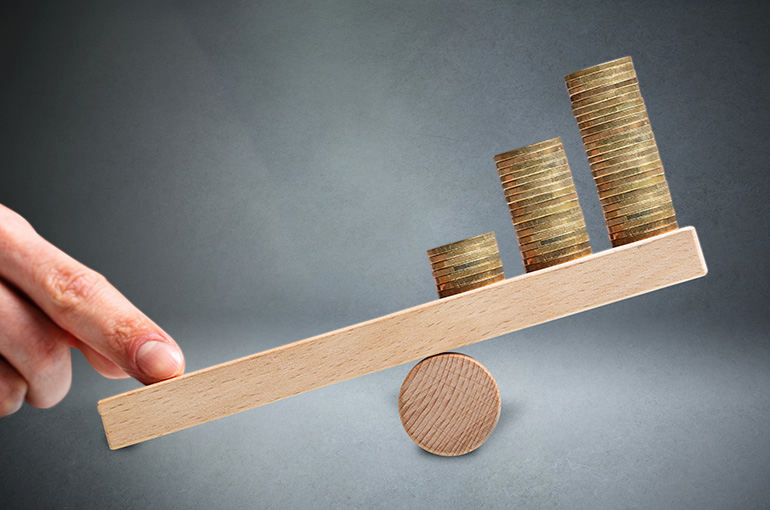 China's Macro Leverage Ratio Climbs in First Quarter as Corporate Borrowing Stays High
China's Macro Leverage Ratio Climbs in First Quarter as Corporate Borrowing Stays High(Yicai) April 25 -- China’s macro leverage ratio, the proportion of total debt to the gross domestic product, increased in the first quarter despite the decline of the country’s overall debt, as borrowing in the non-financial corporate sector continues to expand, according to a think tank under the Chinese Academy of Social Sciences.
The macro leverage ratio climbed 6.8 percentage points in the first three months to 294.8 percent, according to a research report recently released by the National Institution for Finance and Development. The non-financial corporate sector’s leverage ratio, which has been increasing for the past nine quarters, posted the biggest gain, while the household sector logged the smallest.
The main reason for the continued rise in the leverage ratio was the unexpected slowdown in the growth rate of nominal gross domestic product, which is the total market value of all goods and services produced, compared with real GDP, which is adjusted to account for price changes from inflation and deflation, the report said.
Although real GDP advanced 5.3 percent in the first quarter year-on-year, nominal GDP only climbed 4.2 percent, it added. This is the fourth consecutive quarter that the nominal GDP growth rate has been behind that of the real GDP.
If the nominal GDP growth rate hovers around 4 percent to 5 percent in the long term, the debt growth rate of the real economy would need to slow to around 5 percent in order to keep the macro leverage ratio stable, it said.
However, in a situation where both monetary and fiscal policies are spurring economic growth by lowering the costs of financing, it will be difficult for the debt growth rate to slow down in the short term, it added.
The macro leverage ratio is expected to continue to rise this year, but at a slower rate than last year, the think tank said. It should gain around 10 percentage points over the course of the year, less than 2023’s 13.5 percentage points.
Growing Debt
The leverage ratio of the non-financial corporate sector jumped 5.7 percentage points in the three months ended March 31 to 174.1 percent. It has been on the rise for the past two years and is now 20 percentage points more than it was at the end of 2021.
Corporate debt is expanding at a faster rate than the country’s economy due to the economic slowdown and this is the main reason why the leverage ratio of non-financial corporations continues to increase, the think tank said.
Also, with the relatively loose monetary policy, the cost of corporate borrowing for some companies are already less than the interest rate on deposits, which has led to funds lying idle, another reason for the leverage ratio keeps rising.
The leverage ratio of the household sector edged up 0.5 percentage point to 64 percent, while that of the government sector nudged up 0.6 percentage point to 56.7 percent.
“The government sector's leverage ratio will continue to rise this year, while the growth rate of the corporate sector's leverage ratio will be slightly lower than last year,” said Liu Lei, secretary-general of the NIFD's Research Center for the National Balance Sheet. “Meanwhile, the household sector's leverage ratio is expected to remain relatively stable.”
To stabilize the macro leverage ratio, China should promote moderate price increases to ensure that the nominal GDP growth rate stays above the real GDP growth rate, as well as step up counter-cyclical adjustments in macro policies, the think tank said.
Editors: Tang Shihua, Kim Taylor